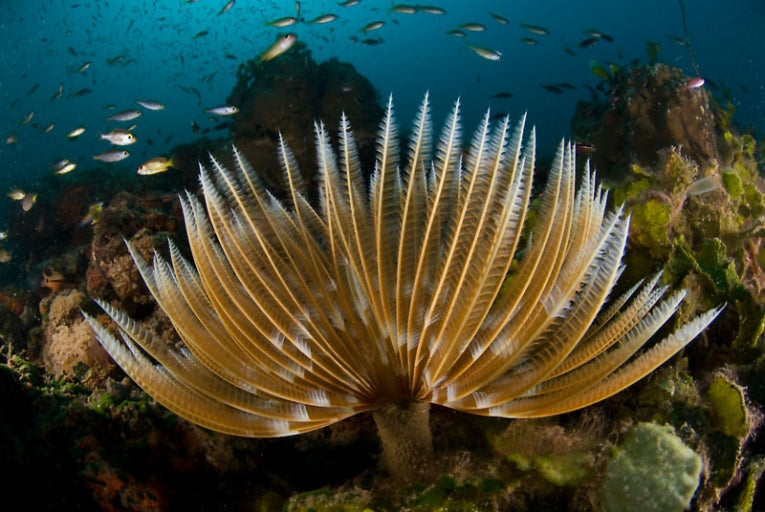Covering approximately 6 million square kilometres of land and sea, the Coral Triangle is one of the world's most important natural habitats. It includes several nations including Indonesia, Malaysia, and the Philippines and provides sustenance for over 120 million people. The conflicting priorities, that this can result in, have led to WWF considering the area as a top priority on its list of areas for marine conservation.
To highlight the beauty, variety and remarkable worth of the area, WWF commissioned a team of photographers. Their mission was to create a book that would bring the area into focus and allow the world to see what it is that WWF is working to conserve. In particular the team had to show how the lives of the human population and the diverse forms of wildlife were interconnected.
Head of the Coral Triangle Programme at WWF, Dr Pet-Soede, explained that although this was an area with abundant sea life, the demands driven by the human population were endangering the balance. She warned, "If this level of unsustainable consumption is not urgently curbed, millions of people whose lives directly depend on the sea will soon be compromised."

Soft coral detail (Dendronephthya sp.), New Britain, Papua New Guinea; Credit and Copyright © Jurgen Fruend / WWF-Canon
Jurgen Fruend and Stella Chiu-Freund, a husband and wife team, ventured out on a journey of exploration over an 18 month period concluding with a trip, at the end of 2010, to Timor Leste. As they went, they captured their expedition on camera and uploaded many of their experiences to their blog.
Now, one year on, a printed record of that expedition is ready. The book combines the photographic representation of the Triangle with a collection of essays written by various conservation experts. It looks at the positive elements of the Coral Triangle such as the biodiversity, the bountiful oceans and idyllic backdrop for human existence, but also it describes the practical and negative aspects of the zone. The fishermen and their communities are shown so that readers may understand their complete dependence on their habitat, a region with unpredictable, and often devastating, natural disasters such as storms and earthquakes.
The book will be printed in limited numbers following its launch in Jakarta today, 27th October.










